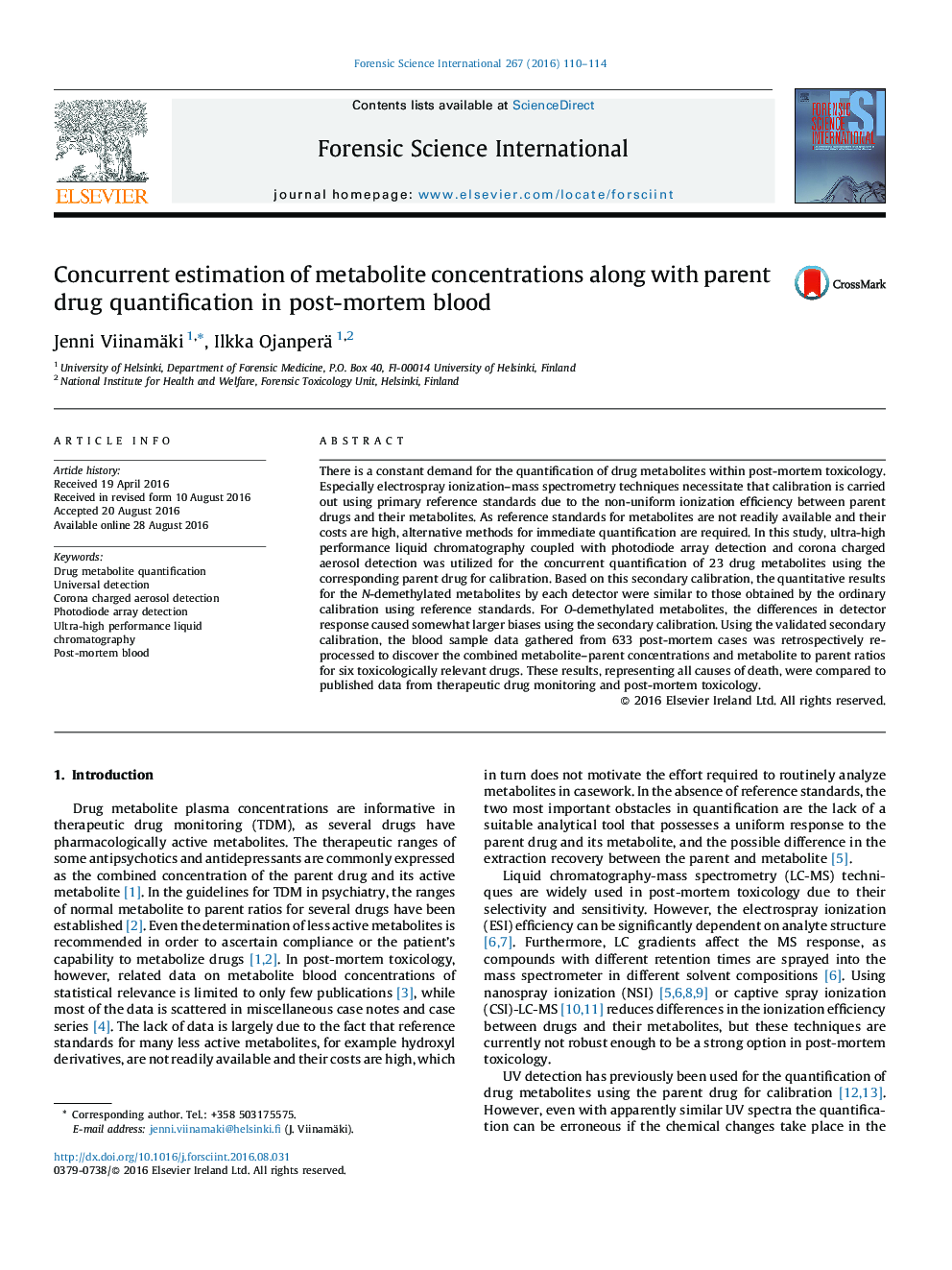| کد مقاله | کد نشریه | سال انتشار | مقاله انگلیسی | نسخه تمام متن |
|---|---|---|---|---|
| 6462637 | 1421983 | 2016 | 5 صفحه PDF | دانلود رایگان |
- Method to estimate metabolite concentrations without reference standard is reported.
- UHPLC with photodiode array and corona charged aerosol detection was used.
- Metabolite calibration was performed concurrently based on parent drugs.
- Non-MS detection showed similar response to parent drugs and N-demethyl metabolites.
- Metabolite concentrations were retrieved from previously generated analytical data.
There is a constant demand for the quantification of drug metabolites within post-mortem toxicology. Especially electrospray ionization-mass spectrometry techniques necessitate that calibration is carried out using primary reference standards due to the non-uniform ionization efficiency between parent drugs and their metabolites. As reference standards for metabolites are not readily available and their costs are high, alternative methods for immediate quantification are required. In this study, ultra-high performance liquid chromatography coupled with photodiode array detection and corona charged aerosol detection was utilized for the concurrent quantification of 23 drug metabolites using the corresponding parent drug for calibration. Based on this secondary calibration, the quantitative results for the N-demethylated metabolites by each detector were similar to those obtained by the ordinary calibration using reference standards. For O-demethylated metabolites, the differences in detector response caused somewhat larger biases using the secondary calibration. Using the validated secondary calibration, the blood sample data gathered from 633 post-mortem cases was retrospectively re-processed to discover the combined metabolite-parent concentrations and metabolite to parent ratios for six toxicologically relevant drugs. These results, representing all causes of death, were compared to published data from therapeutic drug monitoring and post-mortem toxicology.
Journal: Forensic Science International - Volume 267, October 2016, Pages 110-114
